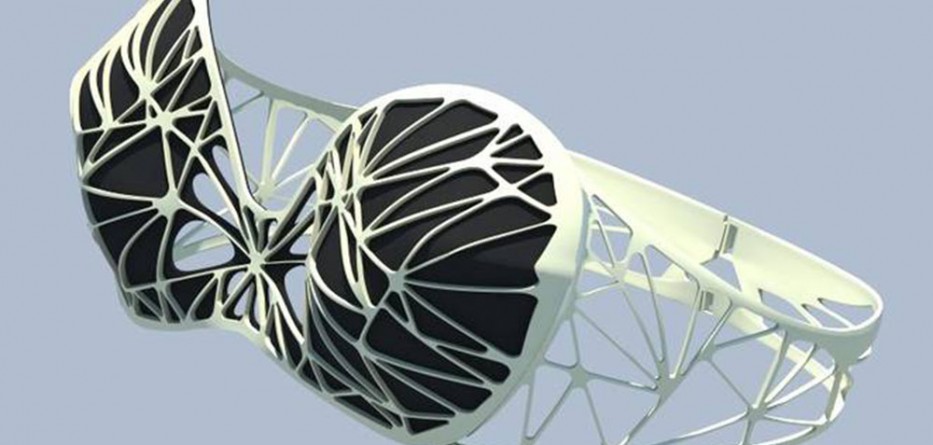The material, which is made mostly from heated sucrose (a form of sugar), has been under development for the last few years by the University of California Riverside (UCR) team, and is intended for applications such as cleaning chemical or oil spills or desalinating water.
By pairing the material with a bikini top, thanks to design firm Eray Carbajo, the Spongesuit was created, which, while it may not be super practical as a consumer good (How many people would need to wear one, and for how long, to clean up a polluted body of water?), could serve as a great example of interdisciplinary collaboration in environmental problem solving.
The Spongesuit, which was designed with surface area of approximately 250 centimeters square and a thickness of 2 millimeters, uses about 54 grams of the Sponge material, at a cost of about 15 cents per gram. The material traps contaminants in the inner pores of the Sponge, keeping them from touching the wearer’s skin, and the material can be reused up to 20 times before being recycled.
“Absorbing everything but water, the material is a powerful tool for water and contaminant separation. The super-porous nature allows the Sponge to absorb in high capacity, up to 25 times of its own weight depending on the density of the substance absorbed. The Sponge does not release the absorbed materials unless it is heated in high temperatures (1,000 degrees Celsius) to re-obtain its original liquid form. This property allows the Sponge to be recyclable as the liquid form is ready to be reshaped having been separated from its contaminants.” – Spongesuit
The Spongesuit took top honors at the Reshape15 wearable technology competition.
Source: treehugger.com









